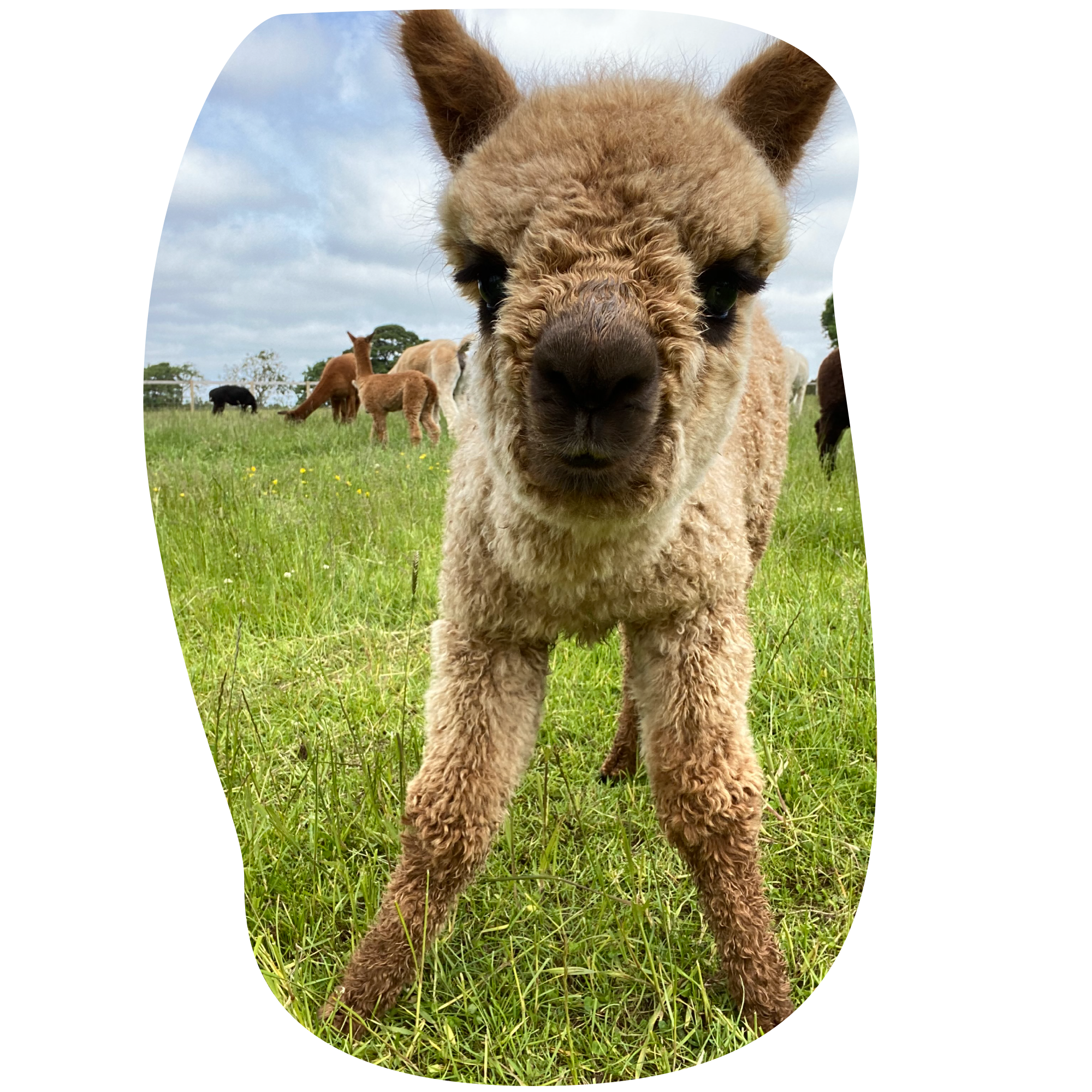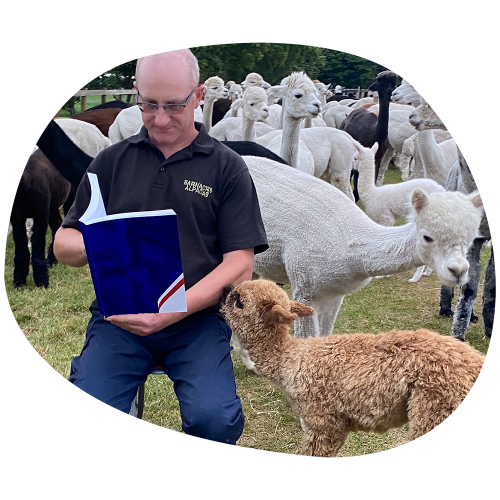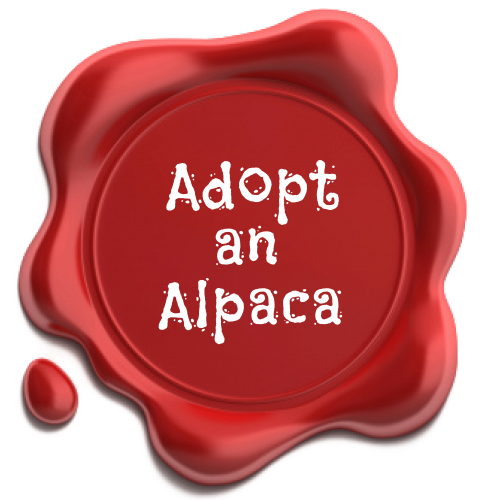Alpaca facts
So if you’re on this page, you’ve obviously got a bit of the alpaca bug! They are fascinating animals and becoming more and more popular with breeders and hobbyists alike. Even if you’ve no intention of ever keeping them, we find them very easy to get hooked on. You may like to know a bit of history about them, why they are bred and how they are kept. Of course there is always more to learn, so if you’re still curious after reading this, do come along to one of our ‘walk and talks’ to find out more.
What are alpacas?
Alpacas (Vicugna pacos) are members of the camelid family, related to the llama and domesticated by the Inca from the wild vicuña. They originate from the cool and arid Altiplano (Spanish for high plain) in the central Andes, South America at an altitude averaging 3,300 meters (11,000 feet). Alpacas live around 20 years, weigh 60-80kg and stand 90cm at the shoulder.
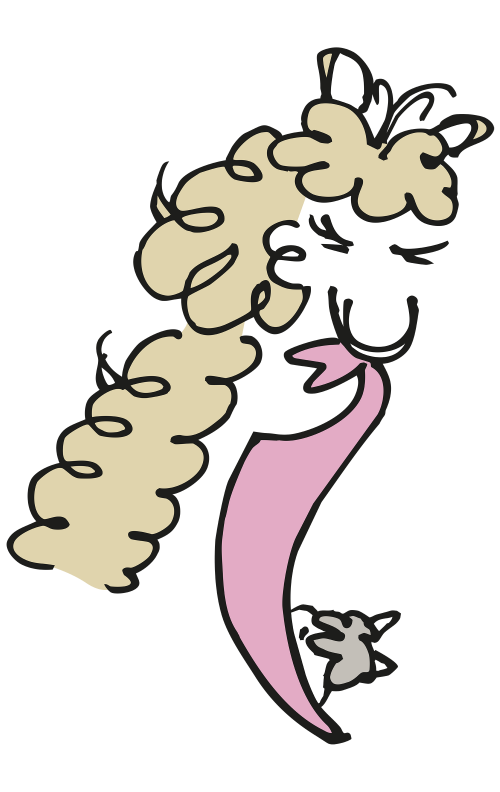
What are alpacas bred for?
The most colour diverse fibre producing animal in the world, alpacas are bred for their high quality, luxurious fleece. There are 22 official colours including shades of white, fawn, brown, grey and black. Some animals are multi-coloured or ‘fancy’.Their fleece is exceptionally fine and bright. It is stronger, warmer and softer than wool. It is no wonder that alpaca fibre is as desirable in the fashion industry as cashmere.
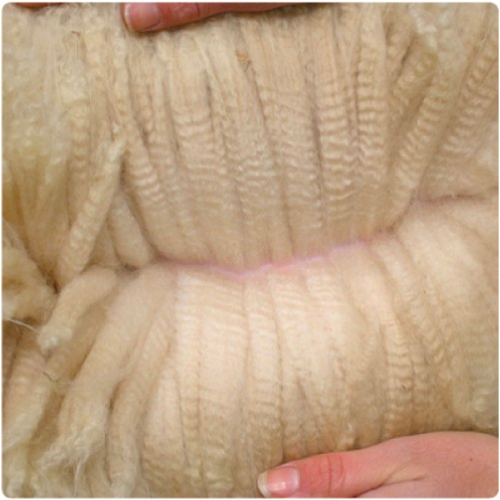
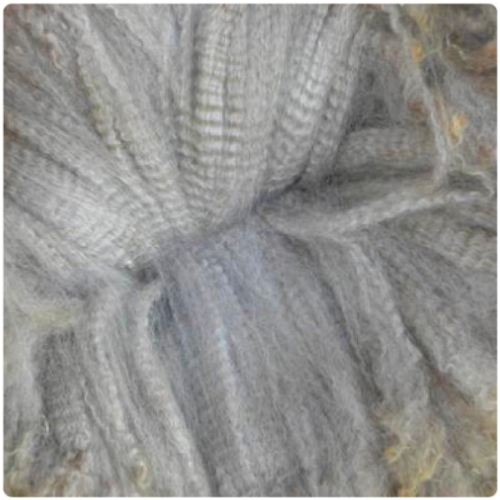
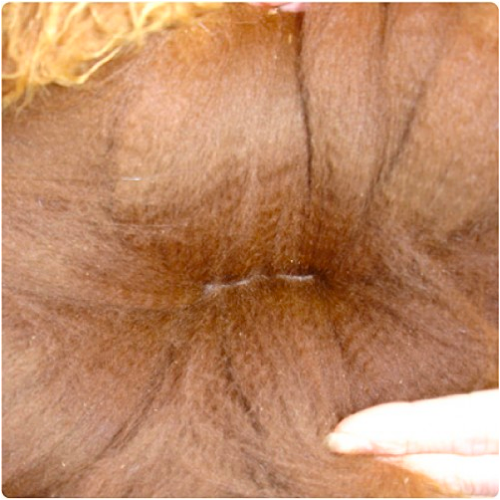
What do they eat?
Alpacas are ruminant herbivores and natural browsers. They spend a lot of time eating grass and chewing the cud. Good hay should always be available to them and it is recommended to feed a quality camelid supplement to give them the extra minerals they need. Clean, fresh water must also be available.
What husbandry is needed?
Toenails need regular trimming, an easy job with a well behaved alpaca, and once a year professionals cover the country to provide teeth cutting and shearing services.
Regular worming and vaccinations are also recommended. Droppings are conveniently done in communal sites throughout their field making cleaning up easy.
How do you keep them?
Alpacas are very social herd animals and must always be kept with others of their kind. Starter herds may comprise good quality, friendly young males which are sometimes castrated and called ‘wethers’. Breeding females and intact males are normally kept separate. They can be kept on grassland at about 6 per acre depending on the quality of forage. As with other camelids, alpacas have a soft padded foot with two toes that cause minimum damage to the land. Although excellent jumpers, they tend not to risk being separated from the rest of the herd and rarely challenge fences. Four foot fencing, without barbed wire, is adequate. A field shelter or overhanging trees is good for shade and protection from the rain.
Breeding
Females are induced ovulators and can fall pregnant at any time of the year, generally after they are one year old.
Gestation is on average 11½ months, although it can be up to 3 months longer, and results in a single baby or ‘cria’ which is usually born in the morning and weighs on average 8kg.
